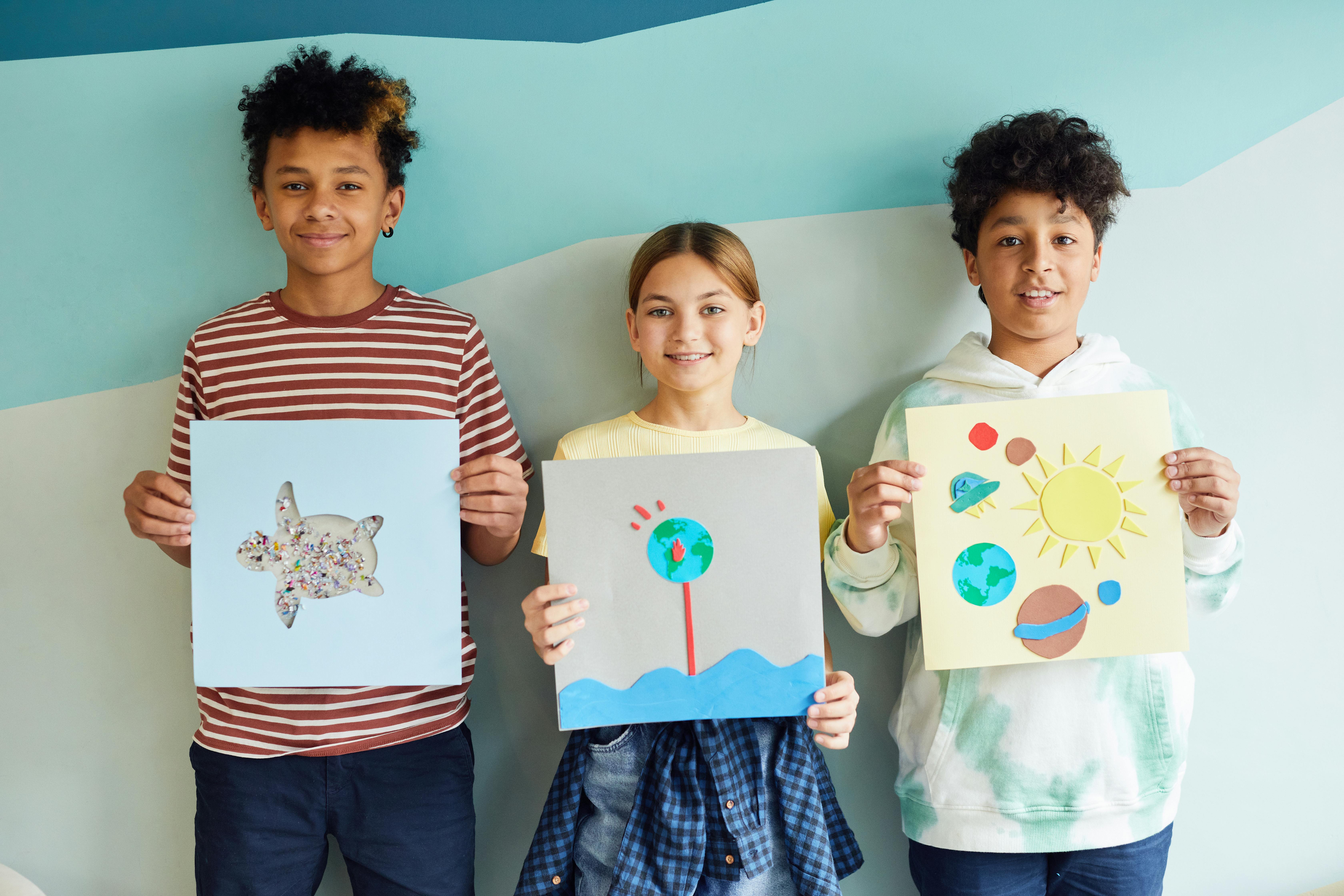How Art Subjects Help Childhood Development

Can doing crafts with kids really help child development? Arts and crafts have historically been dismissed as frivolous, even if these subjects have a profound effect on children’s development. Fortunately, this negative perception of arts and crafts has shifted, and Yale University researchers noted an 86% increase in the sales volume of coloring and art supplies in 2020. Due to the rising interest in arts and crafts, more American parents are encouraging their children to engage in creative activities for both entertainment and educational purposes.
It’s time for parents, guardians, and educators to value art education because it’s crucial to the development of children. By supporting children’s involvement in art subjects, kids can reap benefits in the following areas:
Fine Motor Skills
Whether they’re sketching using a colored pencil or free-style painting using their own fingers, children are developing fine motor skills as they accomplish their activities. Though it may seem like a simple task for adults, children are learning how to coordinate their fingers, hands, and eyes as they fold craft papers or hold paint brushes.
School psychologist Ann Logsdon explained on Verywell Family that you can encourage drawing, coloring, or even just scribbling to help children master their coordination skills. Younger kids can also start with doing simple paper chains, while older children experiment with origami, paper-folding art, and greeting cards. As their fine motor skills improve with practice, they’ll eventually progress to other tasks such as feeding themselves, dressing themselves, and more.
Creativity

Credit: Pexels
Creativity is one of the more obvious skills that art subjects can develop. Many people underestimate the scope of this skill, even though fostering creativity can actually help kids throughout their lives.
In fact, creativity contributes to the mental growth of kids by allowing them to test out ideas, solve problems, and find new perspectives. By giving kids a chance to experiment with art styles and craft materials, you are developing their ability to pursue their ideas and think outside the box. As a result, these exercises can eventually extend to their understanding of situations and people.
Socio-Emotional Intelligence
University of Dundee researcher and art therapist Vicky Armstrong states that creative activities foster children’s ability to communicate thoughts and build relationships. Art allows kids to make eye contact, work towards shared goals, and even be vulnerably honest with loved ones, making it a great experience for kids struggling with emotions.
Art therapy can be a transformative experience for kids grasping big emotions like grief, for example, which may otherwise be difficult for them to deal with. Maryville University explains that grief is difficult to comprehend for kids under the age of 5, and children at this age may experience feelings of separation, abandonment, or rejection because of their loved one’s death, which may cause them to act out. Art provides them with an outlet to remember their connections, express their thoughts, and eventually come to terms with their loss.
Self-Esteem

Socio-emotional intelligence does not just improve children’s connections with others, but also allows them to understand themselves a little better.
Though children have the tendency to compare their skills with other kids, our article on the Unconventional Character Lessons That Arts and Crafts Teach Children highlights that art education can also help them find their confidence. Unlike standardized tests, there are no right or wrong answers in arts and crafts, thus allowing kids to find and appreciate their own strengths. Since they have the freedom to produce what they want, art activities can then build their confidence and self-esteem.
Art subjects develop the physical, mental, and emotional competencies of children, allowing them to grow into more capable adults. So rather than dismissing art as a mere pastime, it’s time for parents and teachers to see it as an investment in children’s growth.
Article specially written for hyglossproducts.com
By Alicia Darius



